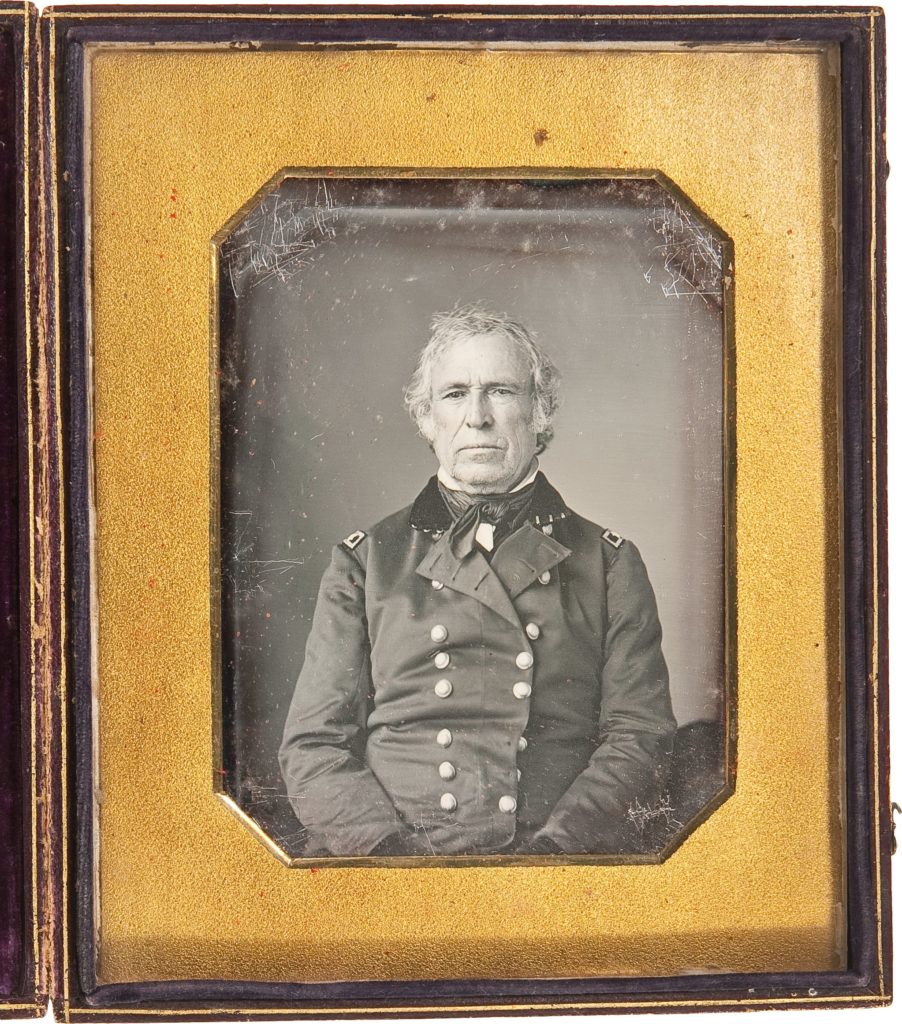
By Jim O’Neal
The Washington, D.C., that said farewell to James Polk in 1849 and greeted General Zachary Taylor was similar to many American cities with a combination of town and pasture. However, even after 50 years, it still looked unfinished. Pennsylvania Avenue was the principal commercial street, lined with buildings from the Capitol to the White House. But beyond, it was a town of monotonous red brick houses interspersed with seas of grass.
There were schemes for improving public lands in various places, but only one was significant to the White House. The marshy expanse to the south was believed to give off vapors, especially in the summer. In 1849, the most feared disease was cholera – particularly from May to November when the first frost quelled it. Those who could afford it left town for the summer and President Polk’s insistence on staying probably contributed to his early demise.
Taylor was the first president elected to office with no political experience. He was ill-prepared for the politics and problems involved. Like William Henry Harrison, Taylor was chosen by the Whigs as their presidential candidate solely because he was a war hero. Taylor spent 40 years in the Army, fighting Indians and winning glory in the war with Mexico. He was called “Old Rough and Ready” by his men. He preferred civilian clothes to military uniforms, even in battle. Short and plump, he had none of the appearance of a military hero and had to be given a leg-up when he mounted a horse.
Taylor was inaugurated in March 1849 and as he moved from the Capitol to the WH, the police had trouble holding back the throngs. Nodding and smiling, he waved his hat and seemed approachable, if not particularly presidential. Those who got a close look found him heavy and scruffy, his face deeply wrinkled, gray hair tousled. After four years of the dour Polk, the public was eager to idolize someone friendly.
But Taylor was an odd hero. Lacking the presence of General Jackson or General Harrison, he looked more the Louisiana planter he was in private life. The general had become president at age 64 and was considered an old man. The hope was that he would prevail through the sheer force of his prestige. Plus, Taylor’s greatest asset was his integrity, which he wore like a medal. Voters seem to have willingly accepted that he would allow his advisers to run the government. It seemed logical to have a chain of command with an honest, experienced general at the head.
The strategy failed since their hero-president provided little leadership and Democrats controlled Congress. The Taylor family circle included few intimates with one notable exception: Senator Jefferson Davis of Mississippi. He had been their son-in-law after he married the second-eldest Taylor daughter in 1835, but she died three months later of cholera.
Then it was suddenly 1850, a most pivotal year and possibly the last chance to prevent a civil war. The slavery issue came to a boil and debates raged in Congress over allowing the people of California and New Mexico to determine their own status. Perhaps with a different president, a workable solution could have held the Union together, but Taylor scorned compromises.
On July 4, 1850, at the laying of the cornerstone of the Washington Monument, President Taylor remained in the hot sun for many hours and became ill. He died five days later. The winds of war only became fiercer and there was nobody on either side who could temper them.
Next stop: an all-out Civil War that would come close to permanent disunion.
 Intelligent Collector blogger JIM O’NEAL is an avid collector and history buff. He is President and CEO of Frito-Lay International [retired] and earlier served as Chairman and CEO of PepsiCo Restaurants International [KFC Pizza Hut and Taco Bell].
Intelligent Collector blogger JIM O’NEAL is an avid collector and history buff. He is President and CEO of Frito-Lay International [retired] and earlier served as Chairman and CEO of PepsiCo Restaurants International [KFC Pizza Hut and Taco Bell].
